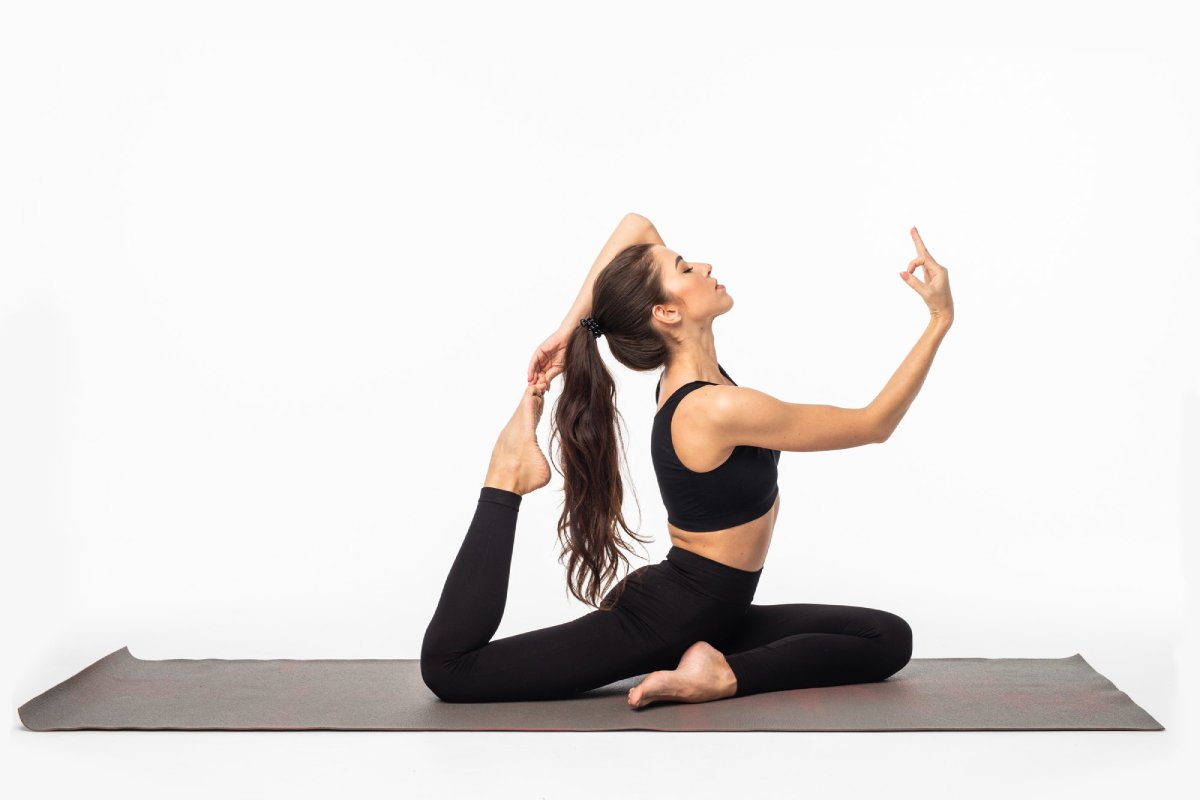In a world where time feels increasingly scarce and stress levels continue to rise, yoga offers a practical solution for the whole family. Whether you’re a busy mom juggling work and childcare, a dad looking to stay flexible, or a child with boundless energy, the ancient practice of yoga provides benefits that extend far beyond the mat.
This guide explores fundamental yoga postures that anyone can practice, regardless of age, fitness level, or experience. You won’t need fancy equipment or hours of free time—just a willingness to try something that might transform your physical and mental wellbeing.
Why Yoga Works for Every Body
Before diving into specific poses, it’s worth understanding why yoga has endured for thousands of years and continues to gain popularity across all demographics.
The physical benefits include:
- Improved flexibility and range of motion
- Increased strength without bulky muscle development
- Better balance and coordination
- Enhanced breathing capacity
- Reduced back pain and improved posture
But yoga’s mental and emotional benefits are equally powerful:
- Decreased stress and anxiety
- Improved focus and concentration
- Better sleep quality
- Greater self-awareness
- A sense of calm that persists beyond practice time
What makes yoga truly unique is its adaptability. The same pose that challenges an athletic adult can be modified for a grandparent or transformed into a playful game for a child. Few other physical practices offer this level of accessibility across generations.
Getting Started: Essential Equipment and Space
One of yoga’s greatest advantages is its simplicity. To begin, you’ll need minimal equipment:
- A yoga mat (provides cushioning and prevents slipping)
- Comfortable, stretchy clothing that allows movement
- Optional props like blocks or a strap (household items like books or a belt work too)
Creating a suitable space is equally straightforward:
- Find a quiet area with enough room to stretch your arms and legs fully
- Ensure the floor is level and free from obstacles
- Keep the temperature comfortable—not too hot or cold
- Minimize distractions by turning off electronics
- If possible, practice in natural light or soft artificial lighting
Before starting any new physical practice, consider these safety tips:
- Consult your doctor if you have existing health concerns
- Never force your body into painful positions
- Focus on your breath throughout the practice
- Move slowly and mindfully, especially as a beginner
- Honor your body’s limitations on any given day
10 Fundamental Yoga Poses for Adults
These cornerstone poses form the foundation of most yoga practices. Each description includes alignment cues and benefits to help you practice safely.
1. Mountain Pose (Tadasana)
Though it appears simple—standing tall with feet together—Mountain Pose teaches proper alignment and body awareness.
How to do it:
- Stand with feet together or hip-width apart
- Spread your toes and press them into the floor
- Engage your thigh muscles slightly
- Lengthen your spine and draw your shoulders back and down
- Let your arms rest at your sides with palms facing forward
- Look straight ahead with your chin parallel to the floor
Benefits: Improves posture, balance, and body awareness; forms the foundation for all standing poses.
2. Downward-Facing Dog (Adho Mukha Svanasana)
This inverted V-shape strengthens and stretches the entire body.
How to do it:
- Start on hands and knees with wrists under shoulders and knees under hips
- Tuck your toes and lift your knees off the floor
- Push your hips up and back, forming an inverted V
- Keep a slight bend in your knees if hamstrings are tight
- Press your hands firmly into the mat and rotate your arms so inner elbows face each other
- Let your head hang relaxed between your arms
Benefits: Strengthens arms and shoulders, stretches hamstrings and calves, energizes the body, and can relieve back pain.
3. Child’s Pose (Balasana)
A restful position that gently stretches the back and hips.
How to do it:
- Kneel on the floor with big toes touching and knees wide apart
- Sit back on your heels
- Fold forward, extending your arms in front or alongside your body
- Rest your forehead on the floor or mat
- Breathe deeply, feeling your back expand with each inhale
Benefits: Relieves stress, gently stretches the spine, and calms the nervous system.
4. Warrior I (Virabhadrasana I)
A powerful standing pose that builds strength and focus.
How to do it:
- Start in Mountain Pose
- Step one foot back about 3-4 feet and turn it out slightly
- Bend your front knee so it stacks above the ankle
- Square your hips and chest to the front of the mat
- Raise your arms overhead, palms facing each other
- Look up at your thumbs if comfortable for your neck
Benefits: Strengthens legs, opens chest and shoulders, builds stamina and balance.
5. Tree Pose (Vrikshasana)
Improves balance while strengthening the legs and core.
How to do it:
- Begin in Mountain Pose
- Shift your weight to your left foot
- Place your right foot on your left ankle, calf, or inner thigh (avoid the knee)
- Once balanced, bring hands to heart center or extend arms overhead
- Fix your gaze on a steady point in front of you
- Hold for 5-8 breaths, then switch sides
Benefits: Improves balance and concentration, strengthens ankles and calves, opens hips.
6. Bridge Pose (Setu Bandha Sarvangasana)
A gentle backbend that opens the chest and strengthens the back.
How to do it:
- Lie on your back with knees bent, feet flat on the floor hip-width apart
- Place arms alongside your body, palms down
- Press feet into the floor and lift hips toward the ceiling
- Clasp hands underneath your body and press arms down for support
- Keep thighs parallel and knees in line with hips
- Hold for 30-60 seconds, then slowly lower down
Benefits: Stretches chest and shoulders, strengthens back muscles, can help relieve mild back pain.
7. Seated Forward Bend (Paschimottanasana)
A deep stretch for the entire back of the body.
How to do it:
- Sit with legs extended in front of you
- Flex your feet, pushing through the heels
- Inhale and lengthen your spine
- Exhale and hinge at the hips to fold forward
- Hold your shins, ankles, or feet, depending on flexibility
- Keep your neck relaxed and gaze soft
Benefits: Stretches hamstrings and spine, calms the mind, can help relieve mild depression and anxiety.
8. Cobra Pose (Bhujangasana)
Strengthens the spine while opening the chest.
How to do it:
- Lie on your stomach with forehead resting on the floor
- Place hands under shoulders, elbows close to body
- Press tops of feet and thighs into the floor
- On an inhale, lift chest off the floor, keeping elbows slightly bent
- Keep shoulder blades drawn together and down
- Look straight ahead or slightly up without crunching your neck
Benefits: Strengthens back muscles, opens chest and lungs, can help relieve lower back pain.
9. Easy Pose (Sukhasana)
A comfortable seated position for breathing and meditation.
How to do it:
- Sit on the floor or on a cushion for support
- Cross your legs comfortably in front of you
- Place hands on knees, palms up or down
- Lengthen your spine while relaxing your shoulders
- Close eyes or maintain a soft gaze
Benefits: Opens hips, calms the mind, creates a stable base for breathing exercises.
10. Corpse Pose (Savasana)
The essential relaxation pose that completes most yoga practices.
How to do it:
- Lie flat on your back with legs extended and slightly apart
- Let your arms rest alongside your body, palms facing up
- Close your eyes and relax your face
- Allow your whole body to become heavy
- Stay for 5-10 minutes, breathing naturally
Benefits: Reduces stress and anxiety, lowers blood pressure, allows integration of the practice.
Quick Yoga Sequences for Busy Parents
Finding time for self-care can feel impossible when you’re managing work and family responsibilities. These quick sequences fit into even the busiest schedules:
5-Minute Morning Energizer
- Mountain Pose (5 deep breaths)
- Side Bends (5 breaths each side)
- Forward Fold (5 breaths)
- Downward-Facing Dog (5 breaths)
- Child’s Pose (5 breaths)
Do this sequence before your morning coffee to wake up your body and mind without reaching for caffeine first.
10-Minute Stress Relief
- Easy Pose with deep breathing (1 minute)
- Cat-Cow stretches (1 minute)
- Child’s Pose (1 minute)
- Downward-Facing Dog (1 minute)
- Standing Forward Fold (1 minute)
- Gentle Twists (1 minute each side)
- Bridge Pose (1 minute)
- Corpse Pose (2 minutes)
This sequence works wonders after a challenging day or when you feel tension building.
Poses You Can Do While Watching Kids Play
- Tree Pose while supervising playground time
- Seated twists on a park bench
- Ankle-to-knee hip openers during TV shows
- Shoulder and neck stretches during story time
Remember that imperfect yoga is better than no yoga. Even five minutes of mindful movement can reset your nervous system and improve your mood.
Kid-Friendly Yoga: Making It Fun
Children naturally love movement, and yoga offers a structured way to channel their energy while teaching valuable body awareness skills.
Animal Poses Kids Love
- Cat/Cow: Moving between arched and dropped back while on hands and knees
- Frog: Squatting with knees wide and hands on the floor
- Butterfly: Seated with soles of feet together, knees opening like wings
- Lion: Kneeling, hands on thighs, tongue out, eyes wide, making a roaring sound
- Cobra: Lying on stomach, lifting chest with arms while making hissing sounds
Storytelling Through Yoga
Turn poses into an adventure by creating a narrative:
- “We’re going on a bear hunt!” (walking in place)
- “Now we have to climb a mountain!” (mountain pose)
- “Look at that tall tree!” (tree pose)
- “Let’s hide in this cave!” (child’s pose)
- “Time to rest under the stars.” (corpse pose)
Partner Poses for Parent-Child Bonding
- Back-to-back breathing: Sit back-to-back and feel each other’s breath
- Double downward dog: Adult creates a large down dog while child crawls underneath
- Flying superhero: Adult lies on back with knees bent, lifting child on shins
- Partner boat: Facing each other, holding hands with legs extended to form a boat shape
These shared activities foster connection while making fitness a family value rather than a chore.
Adapting Poses for Different Bodies
Yoga isn’t about achieving perfect postures—it’s about finding what works for your unique body.
Modifications for Beginners
- Use a wall for balance in standing poses
- Keep knees bent in forward folds
- Practice downward dog with elbows on a chair seat
- Try bridge pose with a cushion under your hips
- Use rolled blankets under knees in seated poses
Variations for Different Fitness Levels
- Lower impact: Practice seated versions of twists and forward bends
- Higher challenge: Hold poses longer or try more advanced variations
- Limited mobility: Focus on gentle joint movements and breathing
- Pregnancy: Widen stance in standing poses and avoid deep twists
- Recovery: Emphasize restorative poses with plenty of support
Props That Help Make Poses Accessible
- Blocks: Bring the floor “higher” for hands in forward folds or standing poses
- Straps: Extend your reach in seated forward bends or shoulder stretches
- Bolsters: Support your body in restorative poses like supported bridge
- Chairs: Provide stability for balance poses or modified inversions
- Blankets: Cushion joints and create height for seated poses
The most advanced yoga practitioner isn’t the one doing the most impressive pose—it’s the one listening most carefully to their body’s needs.
Building a Consistent Practice
Consistency matters more than duration or complexity. These strategies help make yoga a sustainable part of family life:
Tips for Creating a Sustainable Routine
- Start with just 5-10 minutes daily rather than 60 minutes occasionally
- Link yoga to existing habits (after brushing teeth, before dinner)
- Keep equipment visible as a reminder
- Practice with family members for mutual accountability
- Use online videos or apps for guidance and variety
How to Progress Safely
- Master basic alignment in fundamental poses before attempting more complex ones
- Increase duration before increasing difficulty
- Notice subtle improvements in flexibility and strength
- Listen to your body’s feedback—sharp pain always means stop
- Remember that progress isn’t always linear
Tracking Your Yoga Journey
- Notice improvements in daily life (easier to tie shoes, less back pain)
- Keep a simple journal noting how you feel before and after practice
- Take photos every few months to observe postural changes
- Celebrate non-physical benefits like improved sleep or mood
- Share discoveries with family members to increase motivation
The Path Forward
Yoga offers something unique—a practice that grows with you throughout life. The poses you do as a harried parent might evolve as you age, but the fundamental benefits remain consistent.
Begin where you are, with what you have. A few minutes on a carpet square is better than waiting for the perfect setup. Invite your children, partner, or friends to join you, making movement a shared value rather than another task on your to-do list.
Remember that in yoga, as in life, the journey matters more than the destination. The person who practices consistently with awareness will gain far more than someone focused solely on achieving difficult poses.
Your body is your most faithful companion throughout life. Yoga offers a way to maintain that relationship with care, awareness, and respect—a lesson worth passing on to the next generation.
What basic yoga pose will you try first?




